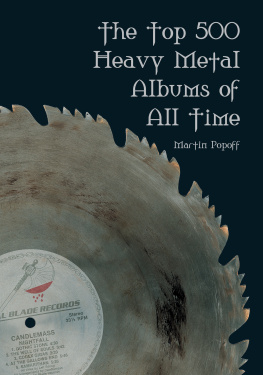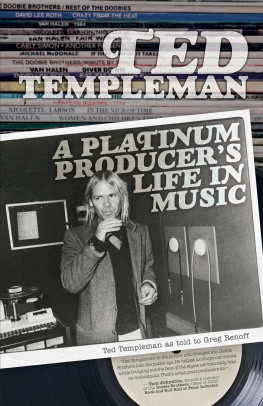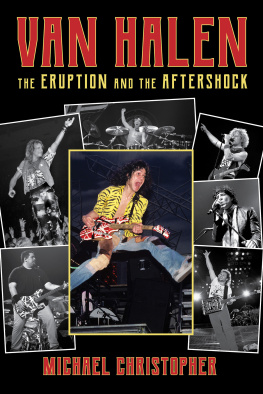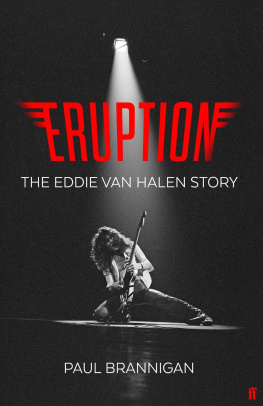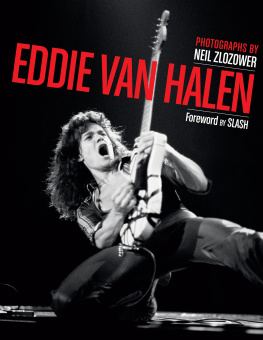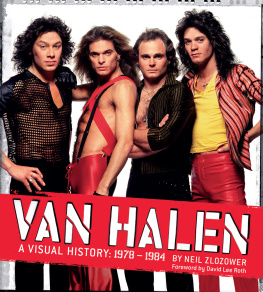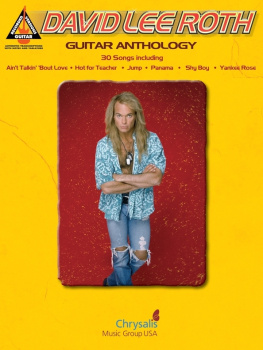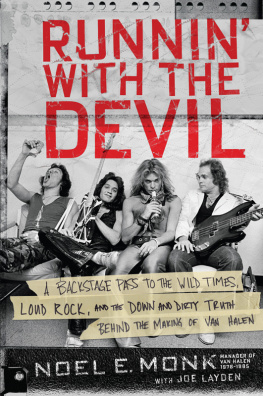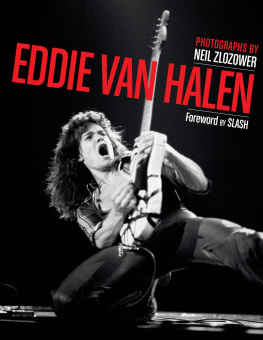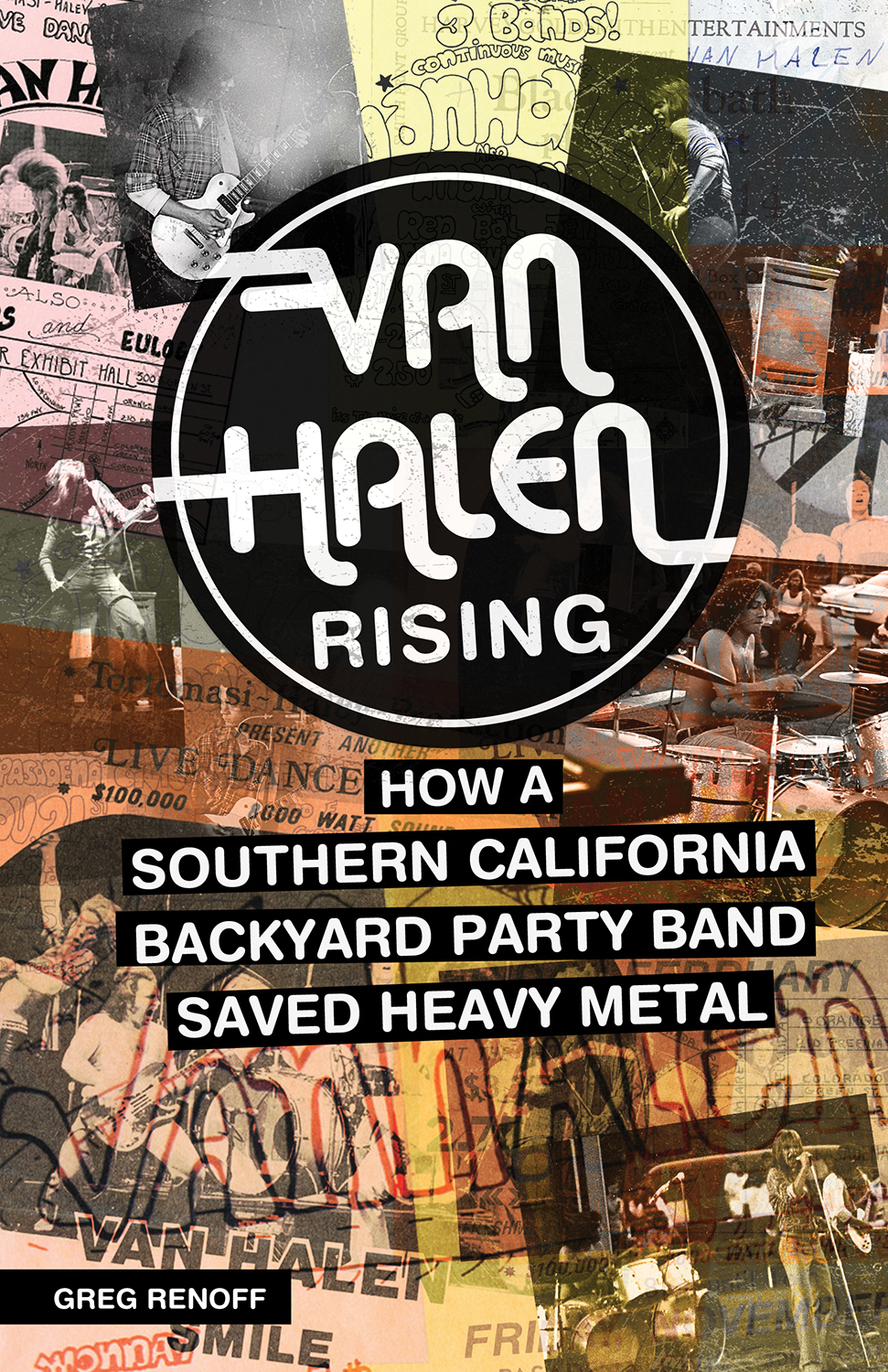ACKNOWLEDGMENTS
Many people contributed to the researching and writing of this book. Along with my extended family, I owe a special thanks to my wife, Denise Dutton, who kept the home fires burning as I worked to finish Van Halen Rising. I am fortunate that key participants in the rise of Van Halen saw the merit in this project and took the time to speak to me: thank you to Pete Angelus, Michael Anthony, Marshall Berle, Donn Landee, Ted Templeman, and Neil Zlozower. Michael Kelley generously shared his knowledge of the L.A. rock scene in the s and has been an unwavering supporter of this project. Roger Renick and Janice Pirre Francis offered me their time and their trust, and they helped me make many essential connections with key interview subjects. Debbie Imler McDermott and Kim Miller shared their priceless memories of their adventures with Van Halen. David Konow introduced me to my fantastic agent, Bob Diforio. Matt Wardlaw helped me secure an essential interview, while Nathan Hodge and D.X. Ferris helped me keep my eyes on the prize. Thanks as well to Jack David, Erin Creasey, Michael Holmes, Laura Pastore, Susannah Ames, and everyone else at ECW Press. You guys are the best.
Other individuals generously gave their time and energy to the nuts-and-bolts aspects of producing and marketing this book. Andy Harris and Gita Varaprasathan graciously housed me on my Los Angeles research trips. Jesse Fink connected me to many individuals who helped me spread the word about the book. Ruth Blatt, BJ Kramp, Marshall Poe, and Rich Zeoli gave me platforms to discuss this book long before its release. Vain Eudes provided his graphic artistry for my websites and this books cover. Jeremy Entin built my fantastic website, vanhalenrising.com. Bill Flanagan and Robert J. Stoltz fact-checked and helped edit the manuscript, saving me from many errors. Rob Heinrich patiently labored through many early drafts of my chapters. The talented Jeremy Steffen color corrected and lovingly repaired many of the images that appear in this book. Tom Broderick, Nik Browning, Douglas Guenther, Steven Rosen, and Mike Wolf shared some key source material. Doug Anderson gave me a tour of his fantastic Van Halen Museum. Lou Capoferri offered legal counsel at a key juncture. Thank you all.
I was also fortunate to have a number Van Halen fans as friends, whose emails and messages reminded me that there were many people eager to read this book. Thank you to Gibson Archer, Aaron Cutler, Kevin Dodds, Scott Faranello, Jeff Fiorentino, Allen Garber, Jeff Hausman, Cully Hamner, Heath McCoy, Josh Peters, Mark Prado, Mark Reep, Grant Richards, Cary Schiffman, and David Schnittger. Rock on, all.
A number of individuals shared their rare photographs and memorabilia and, in doing so, greatly enriched this book. My deepest thanks to Lorraine Anderson, Tom Bonawitz, Brian Box, Patti Fujii Carberry, Mary Garson, Dan Hernandez, Mike Kassis, Lynn Larson Kershner, Miles Komora, Jan Velasco Kosharek, Julian Pollack, Leslie Ward-Speers, Steve Tortomasi, Cheri Whitaker, and Elizabeth Wiley.
While conducting research for Van Halen Rising, I interviewed more than two hundred people. Those who went above and beyond the call of duty in helping me include Mark Algorri, Rusty Anderson, Vincent Carberry, Dennis Catron, George Courville, Martha Davis, John Driscoll, Bruce Fernandez, Jackie Fox, Kevin Gallagher, Tommy Girvin, Lisa Christine Glave, Tracy G. Grijalva, Carl Haasis, Leonard Haze, Eric Hensel, Bill Hermes, Terry Kilgore, Chris Koenig, Jonathan Laidig, Greg Leon, Larry Logsdon, Debbie Hannaford Lorenz, George Lynch, Matt Marquisee, Rafael Marti, William Maxwell, Mike McCarthy, Dana MacDuff, Mario Miranda, Gary Nissley, Valerie Evans Noel, Nicky Panicci, George Perez, Maria Parkinson, Jim Pewsey, Gary Putman, Joe Ramsey (RIP), Randy Rand, Janet Ross, Donny Simmons, Emmitt Siniard, Dana Spoonerow, Nancy Stout, Steve Sturgis, David Swantek, Dan Sullivan, Dennis Travis, Jack Van Furche', Terry Vilsack, and Peter Wilson. To each of you, my sincere thanks.
Most of all, I owe a thank you to those most responsible for sparking this project: Michael Anthony, David Lee Roth, Alex Van Halen, and Edward Van Halen. Van Halen fans hope to see you in the future, not in the pasture.
INTRODUCTION
In light of heavy metals perennial popularity, its easy to forget that the abrasive musical form was on the ropes by 1978 . Bands that had packed coliseums just years earlier, such as Mountain, Deep Purple, and Grand Funk, had splintered and disappeared. Hugely successful acts like KISS and Black Sabbath saw their album sales soften at a time when the industry enjoyed its greatest profits ever. Even Led Zeppelin, one of the genres originators, hadnt released an album since the spring of 1976 .
As metal declined, other genres exploded. Punk rock, with its aggressive sound and nihilistic lyrics, took root in New York City and London. The growing movement, which was spearheaded in America by Television and the Ramones and in the UK by the Clash and the Sex Pistols, had conquered England and seemed poised to do the same in the States. As the trendsetting Seymour Stein of Sire Records predicted in late 1977 , Boston, New York, San Francisco, and Los Angeles are all into punk now by February and March of next year, I expect punk to explode in America.
While punk had yet to prove its mass appeal, light rock had become a commercial colossus. Starting in the early 1970 s, West Coastbased singer-songwriters, country-folk artists, and soft rockers filled stadiums and dominated airplay. By 1977 , its appeal showed no sign of subsiding. In fact, the latest releases from Los Angeless two leading rock groups, Fleetwood Mac and the Eagles, each sold four million copies within twelve months of release.
Then there was the throbbing beat of disco. What had begun in the early s as an underground urban phenomenon had become a national dance sensation. And in perhaps the most powerful statement of the genres chart power, rock acts like the Rolling Stones and Rod Stewart recorded their own disco-flavored singles.
This three-pronged attack further corroded heavy metals popularity. Punks ferocious assault on metals conventions rendered the once mighty Led Zeppelin and Black Sabbath dinosaurs in the eyes of many rock fans. High school kids who came of age hearing hard rock from Ted Nugent and Aerosmith blasting out of their radios encountered the easy listening sounds of Peter Frampton and Jackson Browne on their FM dials by the time they were old enough to vote. Other young people traded leather for polyester and found their musical release on lighted dance floors rather than smoke-filled arenas.
These trends led many industry observers to declare that metals days were numbered. Creem, which had come to embrace punk, asked, Is Heavy Metal Dead?
Even rock critics whod previously flown the metal flag stopped saluting by 1978 . Sylvie Simmons gave the Motor City Madman a kick in the balls by writing: Ted Nugent plays about the best powerhouse rock around, but thats not to say he isnt getting stale. Heavy metal music per se is getting stale.
These trends and appraisals help explain why Van Halen remained unsigned in Los Angeles for years before Warner Bros. Records snatched them up in early 1977 . Record industry executives who had encountered Van Halen, a quartet consisting of singer David Lee Roth, guitarist Edward Van Halen, drummer Alex Van Halen, and bassist Michael Anthony, had little use for the group. The conventional wisdom was that the singer, who didnt have the greatest chops, came off like a cheap imitation of the outdated Jim Dandy Mangrum of boogie-rockers Black Oak Arkansas. Likewise, the guitarists playing was too uncontrolled to find a niche on commercial radio. In short, label executives thought the band was an anachronism.

